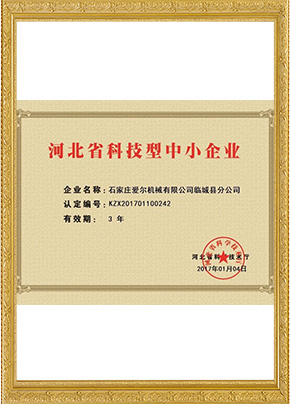Nov . 07, 2024 20:31 Back to list
Types of Impellers for Slurry Pumps Explained in Detail
Understanding Slurry Pump Impeller Types
Slurry pumps are pivotal in various industries, particularly those involving the transportation of abrasive and viscous materials. The impeller type in a slurry pump plays a crucial role in determining the pump's efficiency, capacity, and suitability for specific applications. In this article, we will explore the different types of slurry pump impellers, their features, and their applications.
What is a Slurry Pump?
A slurry pump is designed to handle abrasive and high-density slurries, which are mixtures of solids and liquids. These pumps are commonly used in mining, mineral processing, construction, and wastewater treatment. Due to the challenging nature of slurries, the impeller must be robust and engineered for optimal performance to minimize wear and tear.
Impeller Types in Slurry Pumps
Open impellers are characterized by their blades being exposed, allowing for easy passage of solids. This design facilitates efficient handling of coarse particles and allows for various slurries with different viscosities. The primary advantage of an open impeller is its ability to handle non-consolidated slurries, making it ideal for applications in mining and dredging where solid content varies significantly. However, open impellers may also experience more wear when dealing with highly abrasive materials.
2. Closed Impeller
Closed impellers feature blades enclosed between two shrouds. This design provides better hydraulic efficiency, resulting in higher pressure and flow rates than open impellers. Closed impellers are advantageous for transporting slurries with finer particles and lower solid content. They are commonly used in applications where maintaining high pressure is critical, such as in wastewater treatment and chemical processing. However, closed impellers can be more susceptible to clogging when handling slurries with larger particles.
slurry pump impeller type

3. Semi-Open Impeller
Semi-open impellers strike a balance between open and closed designs. They have a single shroud but maintain some openness at the inlet side. This design allows for better flow with moderate efficiency and reduced risk of clogging, making it suitable for slurries that contain a mix of particle sizes. Semi-open impellers find applications in various industries, including construction and mineral processing, where both coarse and fine particles are present.
4. Vortex Impeller
Vortex impellers are designed to handle slurries with high solid concentrations and fibrous materials. Their unique design creates a vortex flow pattern, which minimizes contact between the solids and the impeller. This reduces wear and enhances the pump’s longevity. Vortex pumps are particularly effective in applications such as sludge handling in wastewater treatment facilities, where traditional impeller designs might struggle due to the high solids content.
5. Screw Impeller
Screw impellers, or auger-type impellers, are designed for specific applications where solid content is extremely high, such as in the food and waste processing industries. The helical design allows for the efficient movement of thick slurries, minimizing the risk of blockage. Screw impellers are particularly effective in transferring sludge, slurry, or other highly viscous materials, providing a reliable solution in challenging environments.
Conclusion
Choosing the right type of impeller is essential for maximizing the efficiency and lifespan of a slurry pump. Each impeller design has its unique strengths and weaknesses, making them suitable for different applications. Open impellers excel in handling variable slurries, while closed impellers are optimal for high-pressure scenarios. Semi-open impellers offer flexibility, vortex impellers reduce wear in high-solid-content scenarios, and screw impellers handle highly viscous slurries effectively.
Understanding these impeller types allows engineers and operators to select the appropriate slurry pump for their specific needs, ensuring efficient operation and minimizing maintenance costs. As industries continue to diversify, the role of slurry pumps and their impeller types will remain significant, driving advancements in technology and applications.
-
Top Submersible Pump Companies High Quality Manufacturers & Suppliers in China
NewsJul.08,2025
-
High Quality Seal for 5 Inch Dredge Pump Reliable China Manufacturer & Supplier
NewsJul.08,2025
-
High-Efficiency Slurry Sand Pump from Leading China Manufacturer – Durable & Reliable Solutions
NewsJul.07,2025
-
High-Quality Slurry Pump Made in China Durable Steel Mill Slurry Pump & Parts
NewsJul.07,2025
-
High Quality Excavator Dredge Pump Manufacturer & Suppliers from China – Reliable, Durable, Efficient Solutions
NewsJul.07,2025
-
Wholesale Slurry Pump Closed Impeller Supplier High Efficiency China Slurry Pump Closed Impeller
NewsJul.06,2025
